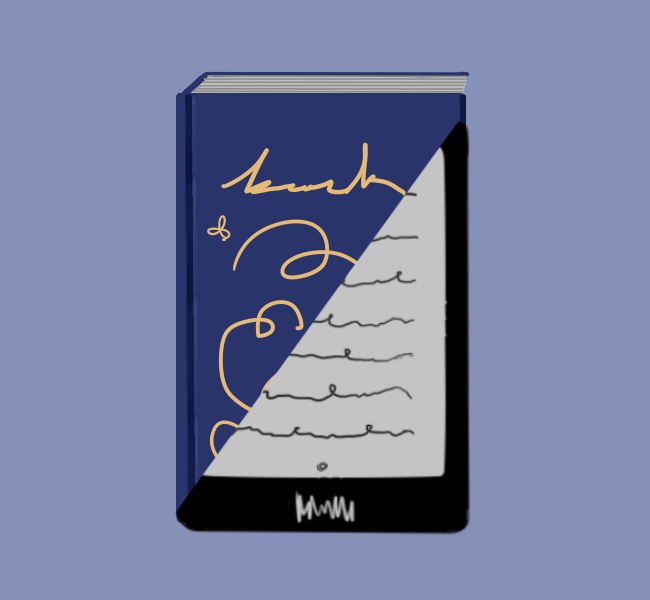Is print still preferred in a digital society?
By EMILIE BROWN — emrbrown@ucdavis.edu
The debate between books and textbooks in either print or digital format has been a hot topic for quite some time, especially in academic circles. While some students prefer to stick with traditional print, others find the convenience of a digital format to be a better fit for their needs. So which format is better? Should we be heading to Shields Library or praising Top Hat and Canvas Bookshelf?
The argument for print:
I’ve noticed two main arguments when discussing the benefits of print. One: a print textbook makes it much easier to write in the margins, highlight and mark and review the information. And two: studies have shown that we are able to focus better when reading print. When you sit down at a laptop to read a textbook, you’re fighting email notifications, Discord messages, Netflix temptations and more. But if you are looking at the book in front of you, for the most part, you’ll only be focusing on the reading. Additionally, print textbooks save us the eye strain of staring at a computer for hours.
The argument against print:
Print books are cumbersome and expensive. No one wants to carry around a hefty 1,000-page textbook all day while walking and riding between classes. Printed textbooks are also usually expensive to buy new, and when you’re taking three to four classes in a quarter, textbook costs can add up fast. It’s true that we can borrow our textbooks from the library or rent them instead, but I’ve noticed that in most cases, those options are still more expensive than their digital alternatives.
The argument for digital:
Digital-format textbooks offer easy access. With e-books, you can read anywhere and at any time, as long as you have a laptop or smartphone. And with UC Davis’s Equitable Access option, you don’t even have to download or find books; they are already uploaded on Bookshelf, connected to Canvas. Digital textbooks are also more sustainable because they do not require all the paper, ink, tools and shipping resources that print textbooks need.
The argument against digital:
Some e-books can be hard to interact with, making it difficult to review the material and understand it. Studies have shown that reading digital-format textbooks can lead to increased eye strain, headaches and sleep issues, and students usually end up distracted, multitasking and scanning the material rather than reading it. According to the same study, 85% of the tested students were more likely to multitask when reading in an online environment. In comparison, only 26% of students multitasked when reading print. From this, it seems that it can be harder for students to focus when they use digital-format textbooks.
In the end, using print textbooks or digital ones really comes down to individual preference. Personally, I love flipping through the old pages of textbooks and being able to focus on what I’m reading without being distracted by my laptop. However, both sides have convincing arguments, and students should weigh the pros and cons of each format before choosing which best suits their learning needs.
Written by: Emilie Brown — emrbrown@ucdavis.edu
Disclaimer: The views and opinions expressed by individual columnists belong to the columnists alone and do not necessarily indicate the views and opinions held by The California Aggie.





